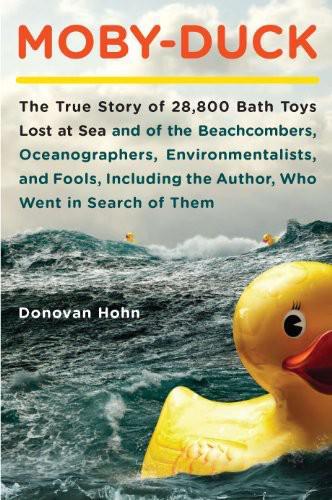
Moby-Duck: The True Story of 28,800 Bath Toys Lost at Sea and of the Beachcombers, Oceanographers, Environmentalists, and Fools, Including the Author, Who Went in Search of Them
by
Donovan Hohn
Published 1 Jan 2010
You want to know what it’s like inside the toy factories of Guangdong. You’re marveling at the scale of humanity’s impact on this terraqueous globe and at the oceanic magnitude of your own ignorance. You’re giving the plight of the Laysan albatross many moments of thought. The next thing you know, it’s the middle of the night and you’re on the outer decks of a post-Panamax freighter due south of the Aleutian island where, in 1741, shipwrecked, Vitus Bering perished from scurvy and hunger. The winds are gale force. The water is deep and black, and so is the sky. It’s snowing. The decks are slick. Your ears ache, your fingers are numb. Solitary, nocturnal circumambulations of the outer decks by supernumerary passengers are strictly forbidden, for good reason.
…
“Please be advised that the APL China v. 030 has been delayed due to severe weather encountered enroute to Seattle,” the fax began. “The ship has suffered some weather damage, but we do not yet know the full extent.” To appreciate the full extent of the damage the APL China had suffered, one must first appreciate the full extent of the APL China. The China was a C-11-class post-Panamax ship, meaning that—at 906 feet long and 131 feet wide—it was too big for the locks of the Panama Canal. Standing on a dock beside it, you would have felt as though you were standing at the foot of an unnaturally smooth cliff, a palisade of steel. The carrying capacity of a container ship is measured in TEUs, or twenty-foot-equivalent units, because a standard shipping container is twenty feet long.
…
In mid-January, when I’d be returning from China, there were no NSB ships departing from Hong Kong for Seattle, but there was one ship—the Hanjin Ottawa—departing from Pusan, South Korea, for Seattle, following roughly the same route the Ever Laurel had taken sixteen years before, and roughly the same route the China had taken in 1998. Along this route, the toys had broken free, changing from containerized cargo into legendary characters. Along this route, some oceanic force had beaten a post-Panamax ship to ribbons. Now, from Pusan, I’d travel this route. I also had other, vaguer, more philosophical reasons for shipping out, reasons that the actuarial phrase “act of God” helps explain. I didn’t expect an ocean crossing to restore my faith in God, exactly—at least not in a biblical God; I lost that irretrievably long ago.

Infinite Detail
by
Tim Maughan
Published 1 Apr 2019
He goes through this every time they pass one of these ports, regardless of the continent—transfixed by the sight of capitalism on pause, the secret network that kept the world running mothballed and abandoned. His train of thought is interrupted by a huge burst of light above them. One of the Zodiac crew has climbed the top of the vast, five-hundred-foot-high super-post-Panamax crane that towers above and over them, and lit a flare. As it’s slowly waved back and forth it scatters light across the crane’s vast skeletal frame, yet more smoke rising into the dark sky. It looks to Rush like an act of victory and defiance; like news footage of freshly liberated citizens climbing to the top of statues of their now-fallen dictators, to deface their heads and celebrate their liberty in that brief moment of joy before worrying what will happen next.
…
On his previous, precrash voyages Simon had ferried dozens of architects, designers, journalists, and futurists on the Dymaxion—all the hip infrastructure tourists, ready to pay him thousands so they could see it all firsthand, so they could ooh and aah at the Apollo-project levels of human engineering, so they could be wooed by this moonshot built to fill shopping malls. They’d spend a few weeks on the ship, staring out at the fields of containers in awe, before returning home to their speculative models, VR art installations, and thousand-word prose-poem odes to post-Panamax cranes. But Simon had started to hate it all. It had silently consumed him with anger and fury at its extravagance, its wasted potential, its inhuman cost. This, Rush was sure, was why this final voyage was taking place. Simon wanted to see it dead. He wanted to make sure, while the rest of the world crumbled, that it was crumbling too, and that it couldn’t come back to life, that it couldn’t start up again and reanimate the globe-consuming consumerist beast it had grown and fed.
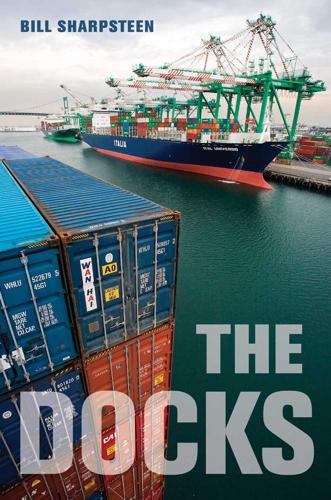
The Docks
by
Bill Sharpsteen
Published 5 Jan 2011
(However, those in skilled positions such as crane drivers are often sent only to jobs that require their particular expertise.) When the lashing jobs are doled out, longshoremen will occasionally refuse them, a decision called flopping, and wait their turn for another, easier position. While the lashers are busy, the crane drivers position the terminal’s four Super Post-Panamax cranes, better known as hammerheads, that can reach over any ship’s girth and, with a 1,000-ton capacity, snatch the containers one by one. The eight-story cranes creep almost silently along rails that are buried in the asphalt dock and covered by a thick rubber strip that ripples off to the side as the wheels push through it.
…
Sansinena, explosion of, 84 Stahl, Joe, 106 Stallone, Steve, 126 strad (straddle carrier), 40, 173 strikebreakers, 104, 107 strikes: “big strike,” 107; “Bloody Thursday,” 112, 114; ILA strike of Indexâ•… /â•… 309 1916, 99; ILA strike of 1934, 104, 107; riot of July 3, 1934, 110; San Francisco general strike, 115; use of tear gas, 109, 110, 113 St. Sure, Paul, 123, 193 Super Post-Panamax cranes, 38 swampers’ board, 190 Swift Transportation, 172 Taft-Hartley Act, 140 Takasugi, Robert M., 212, 218 Teamsters, 115, 174, 177, 192 Terminal Island, 27 terrorist attacks, 232, 233 Terrorist Watch List, 249 Tier II Community Advisory Committee, 63 “topping the boom,” 189 Torm Sara, 273 Total Transportation Services, Inc.

Arriving Today: From Factory to Front Door -- Why Everything Has Changed About How and What We Buy
by
Christopher Mims
Published 13 Sep 2021
It’s also the beginning of the most dangerous and hair-raising part of his regular circuit around the world. “There are no other places in the world that are busier than the South China Sea,” says Jeff. Here, the captain and every officer on watch must all be on high alert. Fishing boats, cargo ships of every size—from rusting old bulk carriers to the largest container ships afloat, “Post-Panamax” vessels carrying nearly twice the cargo on the Brussels—and assorted other flotsam litter the ship’s radar, the horizon, and all the sea between the sky and the bow of the ship. The navigational technology on board a modern container ship includes two kinds of GPS, one to access the U.S. network and the other the Russian; the Automatic Identification System (AIS), on which ships constantly broadcast their identity, heading, and speed; the Electronic Chart Display and Information System (ECDIS); and a succession of backup navigational aids from every era of sailing between the twentieth century (the electronic gyrocompass) and second-century Rome.
…
See also Bezosism; scientific management Mao Zedong, 278 Marcus, Gary, 142 Marine Exchange of Southern California, 48, 50 Marketplace (Amazon business), 236 Marx, Karl, 87 Marzougui, Hedi, 28 Mason, George, 264 mass production, development of, 99–101, 214, 215 McAdam, John London, and macadam roadbuilding, 129 McDonald’s, 123, 205, 220 McKaye, Benton, 130 McLean, Malcolm, 14 McNamara, Robert, 222 Mechanization and Modernization Agreement, 71 Melville, Herman, 30 MEMS (microelectromechanical systems), 145 Mendez, Marc, 68, 78 Microsoft, 204 “the middle mile,” 251–62; Amazon warehouses, delivery of goods from, 170, 184, 188, 195; defined and described, 251–53; delivery service companies involved in, 252; delivery stations, 261–62; sortation centers for, 252–61 Midvale Steel Works, 96 Mississippi River, freight carriage on, 128 Mitsubishi Electric, 95 mobile shelving units, 172, 174, 175, 179, 181, 183, 185–86, 201, 214, 215, 227, 231 monkey’s fist knot, 64–65 monopsony, 137 Moore’s law, 145, 153 Moravee, Hans, Mind Children: The Future of Robot and Human Intelligence, 178 Moravee’s paradox, 178–79, 243 Morreale, Austin, 197–98, 200, 208, 209–10 Motor Carrier Act (1980), 110 Motorola, 164, 228, 286 Mountz, Mick: Amazon warehouses and, 164–66, 168–69, 173, 174; Bezosism and management systems, 201, 211–14, 228; robotic warehousing and, 178, 182, 183, 191 MSC (shipping company), 22, 70 MSC Industrial Supply, 241–45, 248–49 MSDs (musculoskeletal disorders), 237, 238 muda, 226 Mujin (robotics company), 246 Municipal Warehouse No. 1, Port of Los Angeles, 46 Muro, Marc, 76 Murray, Matt, 209 Musk, Elon, 79, 155 MWPVL International, 201 N95 masks, 8, 10 NASA, 144, 248 natural gas supply chain, 91–92 navigating shipping vessels, 37–43 Nazi-era German technology, 131, 143–44 NBC News, 276 Nelson, Daniel, 98, 102 Neopanamax vessels, 27 Netherlands (container ship), 48–50, 52, 54, 55, 57, 60–62 New York and New Jersey, Port of, 48, 55, 61 New York Herald, 129 New York Herald Tribune, 104 New York Times, 112, 114, 276 NEXT Trucking, 74 Nieves, Erik, 244, 247, 249 NIKE system at Amazon, 174–75 Nvidia, 153, 154 Oakland, CA, port of, 52 Obama, Barack, 279 Ocado, 186 OfficeMax, 168 oil crisis of 1970s, 9 Omar, Nimo, 171 Onetto, Marc, 221–26, 228, 229–30, 232, 248 OOCL, 22, 26, 29, 36 OOIDA (Owner-Operator Independent Drivers Association), 111 Operation Paperclip, 144 ORION (On-Road Integrated Optimization and Navigation) system, 283–84 Osaro, 246 OSHA (Occupational Safety and Health Administration), 233, 240, 279 Pacific Maritime Association, 71 Pacific Ocean. navigating, 40–43 Pacino, Al, 277 Paltrow, Gwyneth, 184 Panama, as flag state, 32 Panama Canal, 26–27, 38 Panttila, John “JP,” 148–49 parallelization, 154 Pennsylvania Turnpike, 132 PepsiCo, 136 physical demands: on Amazon workers, 171–76, 197–98, 200, 202, 235–37; on delivery drivers, 272–73 “pick” (extraction of items from storage) at Amazon warehouses, 184–88, 202 pick towers, 160 Pickle (robotics company), 246 Piggly Wiggly, 167 pilot card, 57 Plus One Robotics, 243–46 pods, at Amazon, 175 Portable Pilot Unit, 59 Porter, Brad, 175, 181, 183, 227, 239 Portland, OR, port of, 52 ports. See automation, at ports; containerized shipping; ships and shipping Postmates, 217, 265 post-panamax vessels, 27, 37 predictability: automation, predictability, and efficiency, relationship between, 230–32; ships and shipping, predictability versus speed in, 35–36 preppers, 7 Price, Chuck, 143, 152 Prime. See Amazon Prime ProPublica, 276 Public Roads Administration, 131 queuing theory, 82–83 race/racism, 114, 171, 212, 235 radar, 31, 37–29, 41, 47, 48, 50, 143, 147 Raiders of the Lost Ark (film), 159 RAM, 173, 183 “random stow,” 174, 183, 185–86, 187 Rapid Entire Body Assessment, 238 Real Women in Trucking, 139 reefers (refrigerated containers), 34–35 Relentless.com, 235 Renault, 95 repetitive stress injuries, 200, 208, 233–34, 239 Reynolds, Burt, 109 RightHand Robotics, 217, 246 RIM, 286 River Rouge Complex, Ford Motor Company, 91, 101 robotic delivery, 263–70 robotic warehousing, 159–60, 177–96; accident/injury rates and, 213–14; algorithms in, 181–82, 185, 193; Bezosism, enabling technology for, 199, 200–202; conveyor systems, 163–70, 189, 194; drive units, 160, 179–83, 186, 201, 227, 248; Fanuc industrial robot arm, 159–60, 193; frequent updating of systems, 180–81; full automation, goal of, 241–50; human interaction with, 177–79, 180, 182, 186–87, 189, 191, 192–94, 223, 241–50; loading delivery trucks, 194–95; mobile shelving units, 172, 174, 175, 179, 181, 183, 185–86, 201, 214, 215, 227, 231; multi-item shipments, concatenating, 188–92; packers and packing, 192–94; percentage of robotized Amazon fulfillment centers, 201; “pick” (extraction of items from storage), 184–88; pick towers, 160; self-organization in, 182; storage of items in, 183–84, 195 Roosevelt, Franklin D., 61, 128 Rosado, Jenny, 271–77, 282–85, 287 Rossman, John, 236 Rotterdam, port of, 70 routing sorter, 189 RTGs (rubber-tired gantry cranes), 20–21, 23 Russell, Darin, 241–44, 248 safety training and safety culture at Amazon, 200, 206, 208, 216, 239, 276, 279 Sam’s Club, 167 Samsung, 16, 26, 153 San Francisco, port of, 52 Savannah, GA, port of, 61 Save Santa (1998 holiday season at Amazon), 224 Schneider (trucking company), 107 Schumpeter, Joseph, 242 Schwartz, Ruth, 105 scientific management (Taylorism), 87–106; at Amazon, 174–75, 193; automation and, 101–2; basic principles of, 95–96; Bezosism as modern-day version of, 198, 199, 231, 232; in Cheaper by the Dozen (1948), 89–90; combination of automation, surveillance, and work intensification by, 113, 157, 213, 231–32, 234–35; “digital Taylorism,” 198, 235; efficiency versus productivity, 87, 90, 95, 96, 98, 101–6; evolution of, 101–6; incentive pay, 95, 96, 97; incorporation of supply chain into factory system and, 2, 90–92; precise time management, 96–97, 232; “random stow” principle and, 185; reasons for success of, 98–101; significance/anonymity of, 87–89; Six Sigma compared, 222; stressful working conditions, leading to, 88, 95, 97, 98, 213, 234; Frederick Winslow Taylor, life and ideas of, 87–90, 93–98; trucks/truck drivers and, 113; universal applicability claimed for, 224; worker empowerment and, 95–97, 229–30 Scotland: macadam roadbuilding, invention of, 129; transportation of cod to China from, 12 Sea-Land, 14 Sears, Roebuck and Co., 101, 281 self-driving trucks, 141–57; AI system, 141–43, 147–52, 153; algorithms used by, 151–52, 153; economics of trucking and, 140, 152; fully autonomous system, goal of, 152–57; intersection with humans, 141, 147, 148–51, 155–57; maps and mapping, 142–43, 147; positional systems, 143–47; robotic delivery systems compared, 267–69; software and microchip technology, 145, 152–54; sortation center automation and, 260 Shakopee, MN, Amazon fulfillment center at, 161, 171, 203, 205 Shenzen special economic zone, China, 15, 93 Sherwood, Dennis, 55 shipping containers.
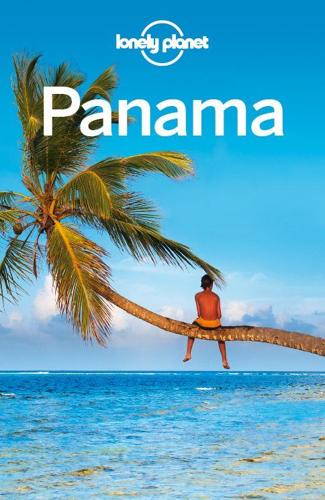
Lonely Planet Panama (Travel Guide)
by
Lonely Planet
and
Carolyn McCarthy
Published 30 Jun 2013
Although as much as 5% of the world’s total sea commerce traverses the Panama Canal, the Suez Canal in Egypt, which is capable of handling larger vessels, serves more than 6%. Furthermore, the Panama Canal is already operating at more than 90% of its maximum capacity and will reach its saturation point in less than five years. The biggest challenge the Panama Canal faces is luring the enormous post-Panamax vessels, which currently depend on either the US Transcontinental Railroad or the Suez Canal. But those in favor of the canal expansion are hoping that this lucrative market will adopt the Panama route, especially as trade volumes between Asia and the continental east coast increase. There is concern that the expansion will not offset its construction costs.
…
Financing the project requires US$2.3 billion in loans from various foreign government-owned banks, in addition to funding by the Panamanian government and the Panama Canal Authority. Since it’s estimated that the value of tolls will increase significantly over the next 20 years, the hope is that the expected flow of post-Panamax vessels through the canal will eventually pick up the tab. Sights 1 Miraflores Locks Miraflores Visitors Center MUSEUM ( 276-8325; www.pancanal.com; viewing deck/full-access US$5/8; 9am-5pm) The easiest and best way to visit the canal is to go to the Miraflores Visitors Center, located just outside Panama City.

Age of Discovery: Navigating the Risks and Rewards of Our New Renaissance
by
Ian Goldin
and
Chris Kutarna
Published 23 May 2016
Rather, it was because a 5,000 TEU ship was the biggest that could squeeze through the locks of the Panama Canal (such ships are labeled “Panamax”), and no one wanted to buy a container ship that could not serve global shipping’s most important route: the canal link between the Americas’ Atlantic and Pacific coasts. In 1996, however, one of the biggest shipping companies in the world, Maersk of Denmark, decided to challenge that orthodoxy. It took delivery of the 6,400-TEU “post-Panamax” ship Regina. The economic center of gravity, Maersk reasoned, was shifting. The Panama Canal was irrelevant to the fastest-growing trade routes: the Pacific routes connecting the Far East (China, Korea, Japan), the Asian Tigers (Hong Kong, Singapore, Taiwan) and the west coasts of North and South America; the Atlantic routes connecting Europe to South America; and the Indian Ocean routes connecting Europe to the Middle East and Asia (via the Suez Canal).
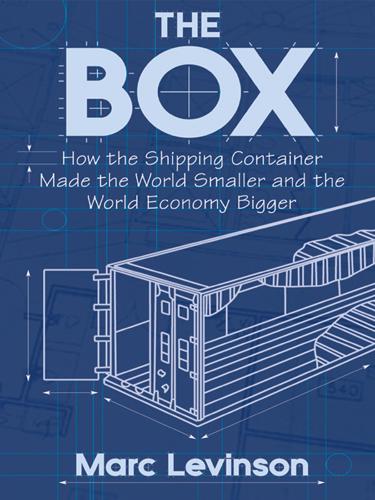
The Box: How the Shipping Container Made the World Smaller and the World Economy Bigger
by
Marc Levinson
Published 1 Jan 2006
By the 1980s, new ships holding the equivalent of 4,200 20-foot containers could move a ton of cargo at 40 percent less than could a ship built for 3,000 containers and at one-third the cost of a vessel designed for 1,800.5 And still the vessels grew. The economies of scale were so clear, and so large, that in 1988 ship lines began buying vessels too wide to fit through the Panama Canal. These so-called Post-Panamax ships needed deeper water and longer piers than many ports could offer. They were uneconomic to run on most of the world’s shipping lanes. They offered no flexibility, but they could do one thing very well. On a busy route between two large, deep harbors, such as Hong Kong and Los Angeles or Singapore and Rotterdam, they could sail back and forth, with a brief stop at each end, moving freight more cheaply than any other vehicles ever built.

Connectography: Mapping the Future of Global Civilization
by
Parag Khanna
Published 18 Apr 2016
Panama City is now positioning itself as the Dubai of Central America—the longest flight in the world now connects the two cities—upping its game in sectors such as real estate, free trade zones, and aviation, even attracting Asian airlines to make stopovers in Panama en route to South American destinations. And with a major expansion of the canal under way (just missing the centennial completion goal) to allow for simultaneous two-directional flow of large post-Panamax tankers, Panama will once again dent Valparaíso’s recent comeback as a pit stop for ships once too wide for the Panama Canal. Already Valparaíso’s container traffic trade with the United States is falling by double digits every year. Eventually, cruise ships may outnumber tankers as the city refashions itself into a cultural tourism hub.
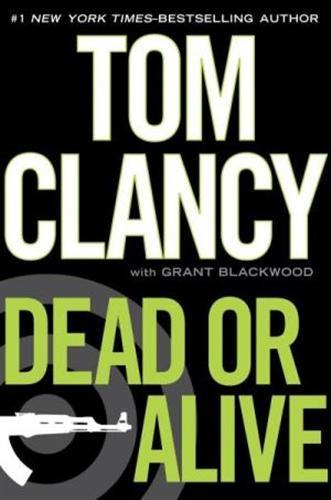
Dead or Alive
by
Tom Clancy
and
Grant (CON) Blackwood
Published 7 Dec 2010
The question that Allison didn’t let herself wonder too much about was the nature of the information her employer was seeking. Why in the world, she wondered, did they care about groundwater in the middle of a desert? As Panamax “box ships” went, the Losan was small, a “twelve abreast” 2,700 TEU—twenty-foot equivalent units—vessel measuring 542 feet, whose capacity had long since been surpassed by Post Panamax descendants, but Tarquay Industries of Smithfield, Virginia, was less interested in modernity than it was in cutting its losses. Of the 120 five-hundred-gallon propane tanks it had sold to the government of Senegal, forty-six had proved defective, having slipped through quality control with improperly welded lifting lugs.